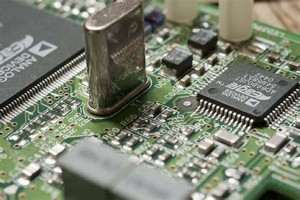Since the late 19th century, power distribution systems (often called grids) have been the world’s primary source of electricity. When these grids are created, they work quite simply – generate electricity and send it to homes, buildings, and anywhere there is a need for electricity.
But as the demand for electricity increases, a more efficient grid is needed. Modern “smart grid” power distribution systems now in use around the world rely on state-of-the-art technology to optimize efficiency. This paper explores the definition of a smart grid and the key technologies that make it smart.
What is smart grid technology?
A smart grid is a power distribution infrastructure that provides two-way communication between utility providers and customers. Digital technologies that enable smart grid technologies include power/current sensors, control devices, data centers and smart meters.
Some smart grids are smarter than others. Many countries have focused a lot of effort on converting obsolete distribution grids to smart grids, but the transformation is complex and will take years or even decades.
Examples of smart grid technologies and smart grid components
Smart Meters – Smart meters are the first step in building a smart grid. Smart meters provide point-of-use energy consumption data to customers and utility producers. They provide energy consumption and cost information to alert users to reduce energy waste and help providers optimize distribution loads across the grid. Smart meters generally consist of three main subsystems: a power system to measure power consumption, a microcontroller to manage the technology inside the smart meter, and a communication system to send and receive energy consumption/command data. In addition, some smart meters can have backup power (when the main distribution line is down) and GSM modules to pinpoint the location of the meter for security purposes.
Global investment in smart meters has doubled in the last decade. In 2014, the global annual investment in smart meters was $11 million. According to Statista, global smart meter investments reach $21 million by 2019, taking into account the system efficiency gains from implementing smart meters.
Smart load control switches and distribution switchboards – While smart meters can provide real-time data to utility providers, they do not automatically control the distribution of energy. To optimize power distribution during peak usage periods or to specific areas, electric utilities use power management devices such as intelligent load control switches and switchboards. This technology saves significant amounts of energy by reducing unnecessary distribution or automatically managing loads that have exceeded their allowable usage time limits. To optimize power distribution during peak usage periods or to specific areas, electric utilities use power management devices such as intelligent load control switches and switchboards. This technology saves significant amounts of energy by reducing unnecessary distribution or automatically managing loads that have exceeded their allowable usage time limits.
For example, the city of Wadsworth, Ohio, uses an electrical distribution system built in 1916. The City of Wadsworth has partnered with Itron, a manufacturer of Smart Load Control Switches (SLCS), to reduce system electricity use by 5,300 megawatt hours by installing SLCS in homes to cycle air conditioning compressors during peak electricity usage periods. Power System Automation – Power system automation is enabled by smart grid technology, using state-of-the-art IT infrastructure to control every link in the distribution chain. For example, automated power systems employ intelligent data collection systems (similar to those of smart meters), power control systems (such as smart load control switches), analytical tools, computing systems, and power system algorithms. The combination of these key components allows the grid (or multiple grids) to automatically adjust and optimize itself with limited human interaction required.
Smart Grid Implementation
When digital, two-way communication and automation technologies are implemented in the smart grid, a number of infrastructure changes will maximize grid efficiency. The implementation of the Smart Grid has enabled the following infrastructure changes:
1. Decentralized energy production
Because the smart grid can continuously monitor and control energy distribution, there is no longer a need for a single large power plant to generate electricity. Instead, electricity can be produced by many decentralized power stations, such as wind turbines, solar farms, residential photovoltaic solar panels, small hydroelectric dams, etc.
2. Fragmented market
Smart grid infrastructure also supports the connection of multiple grids as a means of intelligently sharing energy across traditional centralized systems. For example, in the past, municipalities had separate production facilities that were not connected to neighboring municipalities. With the implementation of a smart grid infrastructure, municipalities can contribute to a shared production plan to eliminate production dependency in the event of a power outage.
3. Small-scale transmission
One of the biggest energy wastes in the grid is the distribution of energy over long distances. Considering that smart grids decentralize production and markets, the net distribution distance within a smart grid is significantly reduced, thus reducing distribution waste. Imagine, for example, a small community solar farm that generates 100% of the community’s daytime electricity needs, just 1 km away. Without a local solar farm, the community may need to obtain power from a larger power plant 100 kilometers away. The energy losses observed during transmission from distant power plants may be a hundred times greater than the transmission losses observed from local solar farms.
4. Two-way distribution
In the case of local solar farms, there may be a situation where the solar farm can generate more energy than the community consumes, thus creating an energy surplus. This excess energy can then be distributed into the smart grid, helping to reduce demand from distant power plants.
In this case, energy flows from the solar farm to the main non-community grid during the daytime, but when the solar farm is inactive, energy flows from the main grid to that community. This bi-directional energy flow can be monitored and optimized by power distribution algorithms to ensure that the least amount of energy is wasted at any time during use.
In a smart grid infrastructure with bi-directional distribution and decentralized grid boundaries, users are able to act as micro-generators. For example, individual homes can be equipped with stand-alone photovoltaic solar systems that generate electricity when in use. If the residential PV system generates excess energy, this energy can be delivered to the larger grid, further reducing the need for large centralized power plants.
The Importance of Smart Grid
At the macroeconomic level, smart grids are critical to reducing electricity consumption. Many local utility providers and governments offer generous and aggressive measures to participate in the adoption of smart grids because it is financially and environmentally beneficial. By adopting a smart grid, energy production can be decentralized, thus eliminating the risk of blackouts, reducing power system operating costs, and eliminating unnecessary energy waste.
Post time: Mar-15-2023








